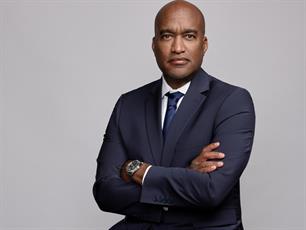Holmes Report 22 Jun 2014 // 6:36PM GMT
While flat or reduced PR and communication budgets were the norm during the recession, the industry has now entered a much healthier, multi-year post recession period in which companies reporting budget increases outnumber those reporting reduced or flat budgets, according to the eighth biennial Communication & Public Relations Generally Accepted Practices (GAP VIII) Study from the USC Annenberg Strategic Communication and Public Relations Center.
A total of 347 senior communicators completed all 50 questions in the study, which was supported by four of the leading US professional associations—the Arthur W Page Society, the Institute for Public Relations, the International Association of Business Communicators, and Public Relations Society of America—and supported by a financial grant from Edelman.
In 2014, 40 percent of public company respondents expected their PR/communication budgets to increase over 2013 levels, while 25 percent expected no change and 35 percent expected decreases. In 2013, 60 percent experienced budget increases over 2012, 17 percent experienced no change and 23 percent experienced decreases.
The 40 percent of respondents experiencing staff growth in 2014 over 2013 outnumbered those expecting flat or reduced staff size, and 38 percent reported staff growth in 2013 over 2012.
An increasingly strategic role
GAP VIII closely examined three indicators of PR or communications’ perceived role and contribution: participation in organizational strategic planning, the extent to which PR-related recommendations are taken into consideration by senior management, and the function's perceived contribution to financial success.
Almost 40 percent of respondents report that PR/communication plays an active role in organizational strategic planning, while 15 percent strongly disagree and 45 percent are neutral. A majority (59 percent) agrees that PR's recommendations are taken seriously by senior management, while 9 percent strongly disagree and 32 percent are neutral. Finally, 44 percent agree that their senior leadership believes PR/communication contributes to financial success, while 6 percent strongly disagree and a substantial 50 percent are neutral.
These findings are important because each of these three indicators strongly correlates with many positive outcomes and descriptors used by participants to describe their organizations, including "successful," "good external reputation," "innovative," and "proactive," among others.
"While correlation doesn't prove causality, patterns that consistently link certain practices with certain positive outcomes, over multiple studies, shouldn't just be ignored," says Professor Jerry Swerling, director of the Strategic PR and Communication Center. "So, while we wouldn't say 'PR involvement in strategic planning leads to a better external reputation,' we are very comfortable saying 'Organizations in which PR is involved in strategic planning are more likely to have better external reputations due to a matrix of interrelated factors.' One of our goals is to better understand that matrix."
Swerling also believes that many companies are giving communication and reputational considerations a far greater role in organizational planning and decision making then was previously the case, and benefiting from that change. “In this new environment, PR/communication is seen as a strategic asset affecting enterprise-wide policy and behavior, rather than in its far more limited, historical role as a purely tactical, secondary and largely marketing-driven function.”
Among public companies 66 percent report that their communication functions are well integrated and coordinated, 39 percent say that communication is well integrated with marketing, and 52 percent say it is well coordinated with finance, legal, operations, and other non-communication functions. Fifty-five percent report strong levels of all three forms of integration, suggesting that they enjoy what the GAP authors have dubbed a "Culture of Collaboration."
Importantly, all forms of internal integration strongly correlate with three attributes that put communication in a stronger position within the organization: a role in organizational strategic planning; a belief by senior management that PR/communication contributes to financial success; and a higher value attached to PR/communication's recommendations by senior management.
In turn, all three of those internal attributes correlate with respondents' self-evaluations of "good external reputation" and "successful" organizations
More than four in 10 (43 percent) of respondents have a solid reporting line to the CEO, President, or Chairman (collectively referred to as the C-Suite), 43 percent have both a dotted line to the C-Suite and a solid line to another function, including 26 percent who have a solid line to marketing and a dotted line to the C-Suite. 14 percent have no line whatsoever to the C-Suite.
Importantly, when asked to describe the degree of appropriateness of their reporting line on a scale of 1 (low) to 7 (high), those with solid C-Suite lines averaged 5.0; those with dotted C-Suite lines averaged 3.87, and those with both solid lines to marketing and dotted lines to the C-Suite averaged 3.85. By comparison, those with only a solid line to marketing averaged 2.29.
However, those having access to the C-suite by either solid or dotted reporting line reported higher levels of internal integration and collaboration of all types, and were much more likely to say that their recommendations are taken more seriously by senior management, that they have a significant role in organizational strategic planning, and that PR/Communication is seen by senior management as contributing to financial success.
Taken collectively the data strongly suggest that while having a solid line to the C-Suite is optimal, the key is access, even if only by dotted line. For example, reporting to marketing can be effective, provided that it is accompanied by a dotted line to the C-Suite.
Several challenges still remain, however: 45 percent of respondents agreed that PR/communication should play a key role in defining overall business strategy while just 13 percent actually play that role; 82 percent agreed that PR/communication should play a key role in defining the company's identity and core values, but only 40 percent do so.
Again, those who do play key role in defining the overall business strategy, identity and core values were much more likely to report higher levels of organizational integration, a stronger role for PR/communication, greater organizational success, better reputation, and improved access to the C-Suite.
Impressively, 75 percent agree that the primary role is to formulate, rather than simply communicate policy, and 81 percent actually do so.
The combined findings on the roles of the PR/Communication function, reporting line, internal collaboration, and other critical issues lead the GAP authors to hypothesize that in many organizations the role of the PR/communication function, and its contribution to organizational success, can be optimized by means of a five-factor cyclical process:
1. Earn (through results) meaningful access to the C-Suite.
2. Champion internal integration and collaboration, with the PR/Communication function showing the way.
3. Have, or obtain, the organizational, business and professional skills necessary to use that influence wisely and effectively.
4. Optimize PR/communication people, processes and procedures to successfully take advantage of the opportunity.
5. Continually reinforce and strengthen each of the Five Factors.
No clarity on measurement and evaluation
Measurement and evaluation is still a work in progress for many companies: 49 percent of respondents use measurement techniques developed in-house, 26 percent use techniques recommended by professional/industry groups, and 20 percent use proprietary methods developed by their outside agencies.
Just 22 percent are making increasing use of audience research in planning and evaluating campaigns, while only 31 percent are measuring on-line conversations. But 71.4 percent strongly agree that there is a need for communications or PR professionals who can interpret data and use it to plan and evaluate programs.
Coupled with the increases in percentage of total budget allocated to evaluation seen over multiple GAP studies, these data reflect the growing importance of analytics and accountability in the practice.
However, as in previous GAP studies no individual measurement tool earned a usage score significantly greater than five on a scale of 1 (no usage) to 7 (extensive usage), suggesting a lack of faith in currently available tools, and a need for new tools that do a better job of measuring actual outcomes and actions, rather than outputs. The five most commonly used measurement tools are:
• Influence on reputation (5.01);
• Social or online media metrics (4.87);
• Content analysis of clips (4.65);
• Total number of clips (4.35);
• Total impressions (4.3).
According to the study authors: “While the relatively high use of the archaic "total number of clips" and "total impressions" is disheartening, this is at least partially offset by the high presence of social media metrics and the virtual disappearance of advertising equivalencies.”
Additionally, respondents reporting a lack of measurement and evaluation were much more likely to describe their organizations as being rigid, autocratic, reactive/short-term, tactical (rather than strategic) and conservative.
Agencies adding greater value?
In good news for the agency industry, for the first time ever in the history of the GAP studies the most commonly cited reason for working with agencies reflects appreciation for intellectual added value, rather than simple labor. In GAP VIII the top ranked rationale was creative thinking, with the perennial winner—additional arms and legs—dropping to second place.
"Objective and independent counsel" and "strategic insight" clustered just behind.
Nearly 100 percent of all large companies work with agencies, and such relationships are the norm among mid-sized and smaller companies as well. However, the percentage of overall budget allocated to agencies has remained flat since 2002 and clients are generally working with multiple firms rather than using the traditional agency of record model. Indeed, 57.4 percent of public companies reporting having ongoing project-based relationships with multiple agencies while only 13 percent reported having a single agency of record.
Social media now dominate the communications landscape
Social media techniques are now more widely used than legacy: asked to use a 1 (none) to 7 (extensive usage) ranking of media channels, the five most commonly used (based on sample averages) were:
• Content created to be spread by social media (5.16);
• Twitter (5.11);
• Production of on-line videos (5.01);
• Facebook (4.77);
• Print newspapers (4.75).
Print magazines (4.70) were ranked seventh, Television (3.31) was 15th and Radio (2.81) was 16th out of 24 media techniques evaluated.
The popularity of creating spreadable content, especially video, reinforces the belief that organizations are now their own media channels. With an increase over the last two years from an average of 4.33 to 5.11 (on a 1-7 scale), the use of Twitter as a corporate communication platform has grown dramatically. In contrast, the use of Facebook over the same period has remained flat.
Emerging tools and techniques that may bear watching include editorial websites (4.09); multimedia content for mobile devices (3.72); Instagram (2.37); Crowd sourcing (2.19); Pinterest (2.01); and Vine (1.87).
Respondents indicated that as many as six separate organizational functions have some degree of use and control over social media in their companies, raising the possibility of multiple voices and muddled messages. However, 87 percent reported that their companies' social media activities are well or very well coordinated.


































.jpg)





.tmb-135x100.jpg)











